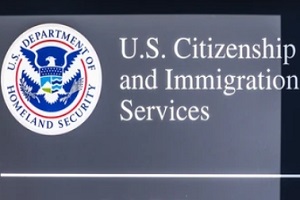There are essentially two methods for a foreign citizen who marries a U.S. citizen to move to the country and receive a green card. For many couples, it can be confusing when trying to decide between a fiancé visa and a marriage visa.
Each visa has its own advantages, as well as qualifying conditions. Therefore, what works best for one partnership might not be the best solution for another partnership or couple. You must take several factors into account, including costs and processing speed, when determining which visa to choose – and how soon to get married after entering the US.
The “Fiancé” Visa
The K-1 visa, often known as the fiancé visa, is a non-immigrant visa that allows the foreign fiancé to enter the country, get married there and subsequently change their status to permanent resident (green card holder).
The “Marriage” Visa
 The foreign spouse applies for a marriage visa (also known as a CR-1 or IR-1 visa), while still in the foreign nation where they were married, with the intention of moving to the United States to permanently reside with their spouse.
The foreign spouse applies for a marriage visa (also known as a CR-1 or IR-1 visa), while still in the foreign nation where they were married, with the intention of moving to the United States to permanently reside with their spouse.
Choosing between a marriage or fiancé visa is an individual preference. The optimal course of action for you therefore depends on your unique circumstances. The length of the immigration process, however, is a significant concern for many couples.
K-1 Visa
The fiancé visa, sometimes referred to as a K-1 visa, is a way for foreign nationals who are engaged to U.S. residents to enter the country with the intention of marrying them. If a foreign spouse wishes to get a green card after getting married, they must go through an “adjustment of status” procedure.
K-1 Visa Process
The first step in the procedure is for the fiancé of a U.S. citizen to petition the U.S. government to issue a fiancé visa. Petition for Alien Fiancé Form I-129F must be submitted by the U.S. Citizen to U.S. Citizenship and Immigration Services (USCIS). An interview will be organized at the American embassy in the nation of the foreign fiancé once the petition has been approved.
If all goes well during the interview, the consulate will then issue a fiancé visa. However, the visa must be used to enter the U.S. within six months of being issued; else, it will expire.
The K-1 is a non-immigrant visa. This type of visa does not allow an immigrating person to remain in the U.S. on a permanent basis. What the K-1 visa does permit, however, is for the fiancé to enter the country in order to marry a citizen of the United States. Once you have arrived in the country on your fiancé’s visa, you must be married and begin the process of applying for an adjustment of status (AOS).
Modification of Status
 “Adjustment of Status” is the name of the application procedure that the foreign spouse must undergo to adjust their immigration status to permanent residency. An immigrant who has submitted a successful Adjustment of Status Application will then have the legal entitlement to reside in the country while awaiting a USCIS office interview.
“Adjustment of Status” is the name of the application procedure that the foreign spouse must undergo to adjust their immigration status to permanent residency. An immigrant who has submitted a successful Adjustment of Status Application will then have the legal entitlement to reside in the country while awaiting a USCIS office interview.
The paperwork for status adjustments often includes several different USCIS forms. You and your spouse will have to complete the following USCIS forms in order to change your immigration status:
- I-693, Report of Medical Examination and Vaccination Record
- I-485, Application to Register Permanent Residence or Adjust Status I-864
- Affidavit of Support I-765
- Application for Employment Authorization (optional)
- Application for Travel Document, Form I-131 (optional)
Along with those documents, you’ll need to collect extra paperwork to include with your application packet, such as your birth certificates, marriage licenses, and other documentation attesting to your sincere marriage.
An interview at the USCIS office closest to you is the following stage in the procedure. Your green card will be sent to your home address following the interview.
Plan Accordingly
If you don’t apply to change your status within a 90 day period of getting married, you’ll have to leave the country. You will lose your K-1 status and be in clear violation of the conditions of your visa. If you linger beyond the time that your visa allocated, it’s possible that you’ll be deported. Overstaying a visa, as well as deportation, can hurt your fiancé’s chances of ever being granted status as a permanent residence.
The adjustment of status package must be submitted on time if you and your spouse intend to live in the United States. Since you may complete the entire green card application process while already legally present in the country, such as when you have a valid fiancé visa, many couples select the adjustment of status procedure.
Very few immigrants have the opportunity to change their status. As the spouse of a U.S. citizen, you are eligible for this convenient procedure because you are now considered an immediate relative.
Marriage Permit (CR-1 or IR-1)
A marriage visa is a way for a foreign national, who is married to a citizen or permanent resident of the United States, to enter the country on an immigrant visa before settling permanently.
In this scenario, the pair would have to wed outside of the United States. The next step is for the American citizen or lawful permanent resident to ask the American government to set aside a visa number for their spouse. Form I-130, Petition for Alien Relative, must be submitted by the petitioner.
Processing by Consuls
After filing for a green card, the immigrant spouse must wait outside of the United States while the consulate processes their paperwork and an immigrant visa is granted.
The paperwork will be delivered to the National Visa Center (NVC) after the petition is granted . Following its evaluation, the NVC will forward the file to the American consulate in the nation of the immigrant spouse.
Interview with a Consuls
The spouse of an immigrant will then be booked for an evaluation at the American consulate facilities. During the meeting, a consular representative will go through the information on your petition with you and make sure you are not barred from entering the country for any reason. To confirm that your marriage is legitimate, the agent will also ask you several questions about your relationship to one another.
Partner Visa (K-3 Visa)
Sometimes the couple have already been married for years, and are residing abroad when they make the decision to immigrate to the US. While an immigrant visa is being processed, they can wait together outside of the United States.
However, what if the American citizen needs to return home before their immigrant partner receives a green card? In this case, the American national may apply for a K-3 visa for the spouse. The immigrant spouse can enter the country on a temporary non-immigrant visa known as the K-3 before changing their status.
The spouse who is a U.S. citizen files Form I-130 first. The American citizen must submit Form I-129F to request the K-3 visa after receiving the receipt notice.
Which is Better: an Immigrant Visa or a Fiancé Visa?
The question of which route—immigrant visa or fiancé visa—is suitable for you will depend on several factors. Here are a few things to keep in mind when making this decision:
Location of the Wedding
 Coming to the United States to get married is the goal of the K-1 fiance visa. Therefore, this is many times the best option if the couple wants to get married in the United States. This approach does require some preparation. Once more, the marriage and application for an adjustment of status must occur within 90 days of the K-1’s entry into the country. The K-1 visa is probably not the greatest choice if you choose to get married abroad.
Coming to the United States to get married is the goal of the K-1 fiance visa. Therefore, this is many times the best option if the couple wants to get married in the United States. This approach does require some preparation. Once more, the marriage and application for an adjustment of status must occur within 90 days of the K-1’s entry into the country. The K-1 visa is probably not the greatest choice if you choose to get married abroad.
Quickness of Marriage
If getting married as soon as possible is a top priority for you and your fiance, it’s worth noting that entering a marriage contract while outside of the United States may take less time. It usually takes 5 to 10 months to get a K-1 visa, which is the quickest route to the US. Therefore, it will normally be quicker to visit the fiancé in his or her place of origin.
Length of American Presence
The K-1 visa is probably the quickest route if the couple’s ultimate goal is to be together as soon as feasible in the United States. It will take between 5 to 10 months for a K-1 fiancé visa from the time of submission to the date of entry to the United States.
The marriage visa, meanwhile, might take 10 to 16 months. However, applying for the immigrant visa through the I-130 at a USCIS foreign office can be even quicker if the spouse is a U.S. citizen who lives overseas.
Travel Internationally
When choosing between the fiancé visa and marriage visa routes, one should take into account the immigrant fiancé’s frequent travel habits. A K-1 visa allows for only one entry. Before the foreign spouse files a Form I-485, Application to Adjust Status, together with an Application for Advance Parole, international travel is not permitted (Form I-131).
Advance parole is often granted 90 days after application. The application for an adjustment of status shall be deemed abandoned if the foreign spouse departs for another country before receiving an advance parole document.
However, a CR-1 or IR-1 spouse who entered the country on an immigrant visa is eligible to leave the country right away. After entering the country with an immigrant visa, the person becomes a permanent resident. The K-3 visa also makes it easier to travel internationally. It is good for up to two years and can be used for repeated entries into the United States.
Marriage Visa or Fiancé Visa?
 These are just a several of the things a couple should consider before choosing between the fiancé visa and the marriage visa. Speed is a crucial factor for so many immigrant couples, especially in light of the lengthy wait times frequently associated with the visa application process.
These are just a several of the things a couple should consider before choosing between the fiancé visa and the marriage visa. Speed is a crucial factor for so many immigrant couples, especially in light of the lengthy wait times frequently associated with the visa application process.
Review the USCIS processing times for every petition before you start. Numerous newcomers will have a selection of entry methods from which to pick. Which one you choose will mostly depend on your individual needs and preferences and the wait times you anticipate.
Contact Us Today!
If you have any questions or concerns regarding the visa and immigration process and which option is going to be in the best interest of you and your fiance. Our team of professionals are happy to assist you during every step of the process in a seamless manner.
Beeraj Patel, Esq.
Latest posts by Beeraj Patel, Esq. (see all)
- Transitioning to Permanent Residency Through Adjustment of Status for Asylum Seekers - April 14, 2025
- What to Do If Your Employer Withdraws Support During the Green Card Process - March 31, 2025
- How a Green Card Attorney Can Help with Complex Immigration Cases Involving Family Separation - March 17, 2025
